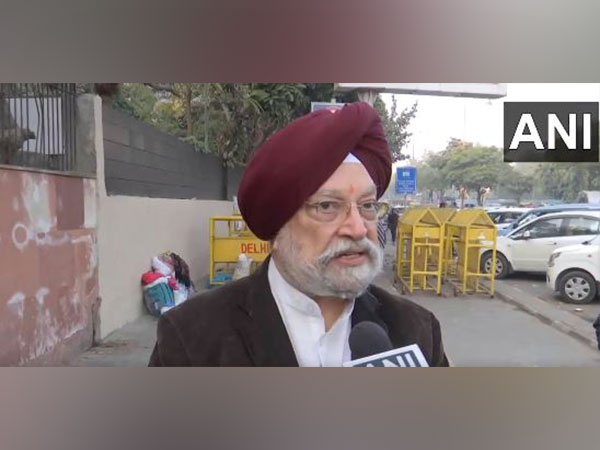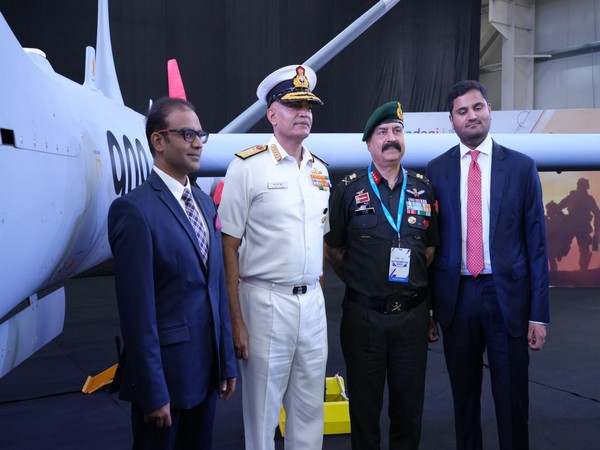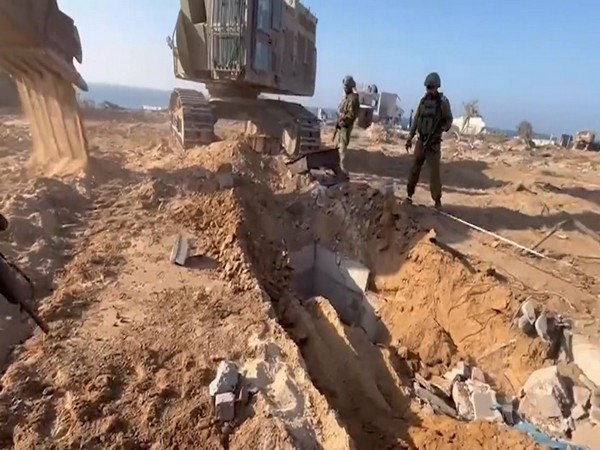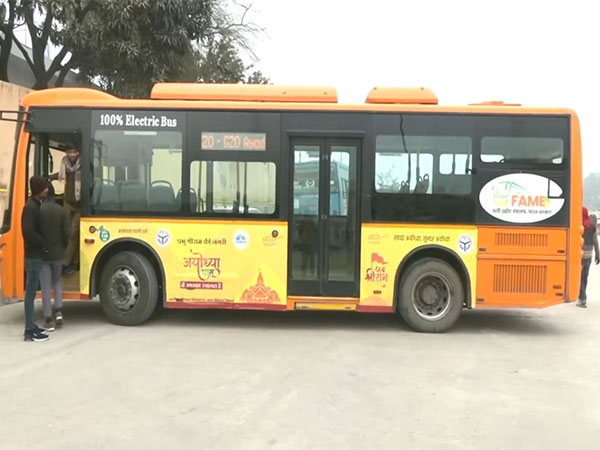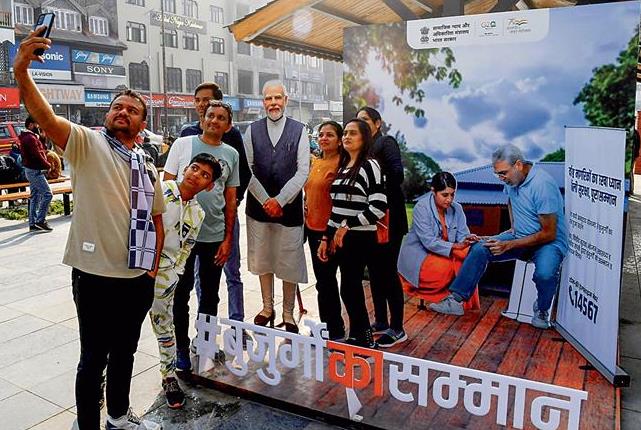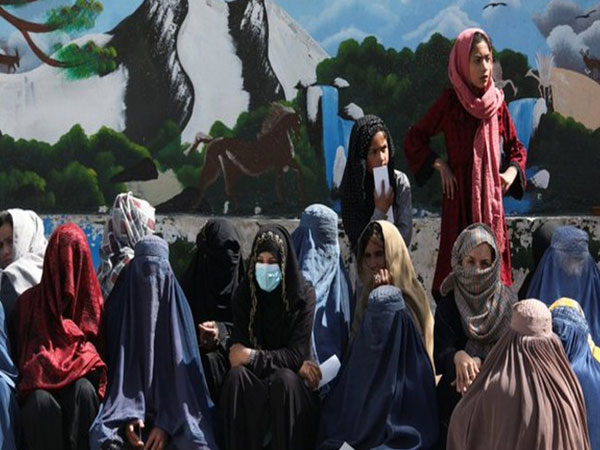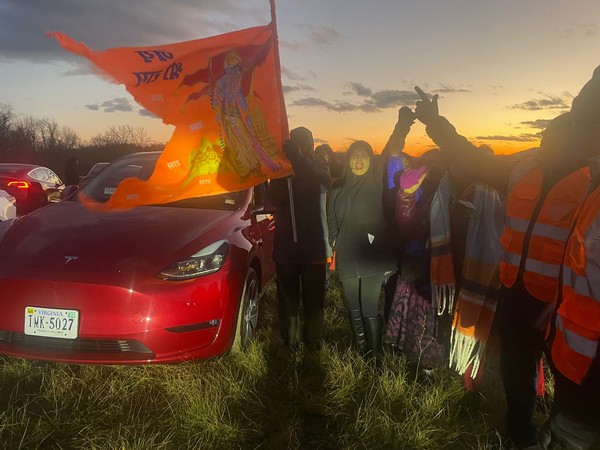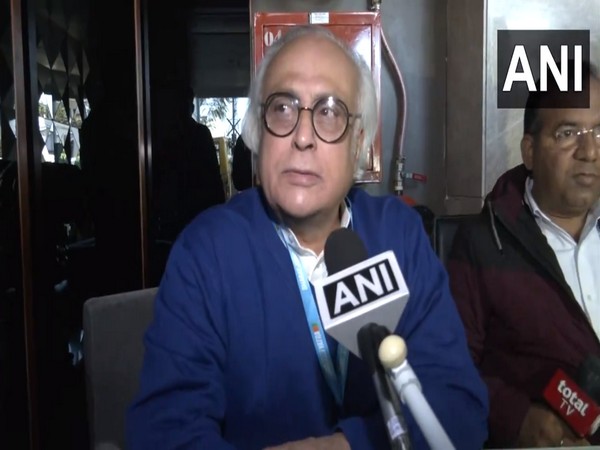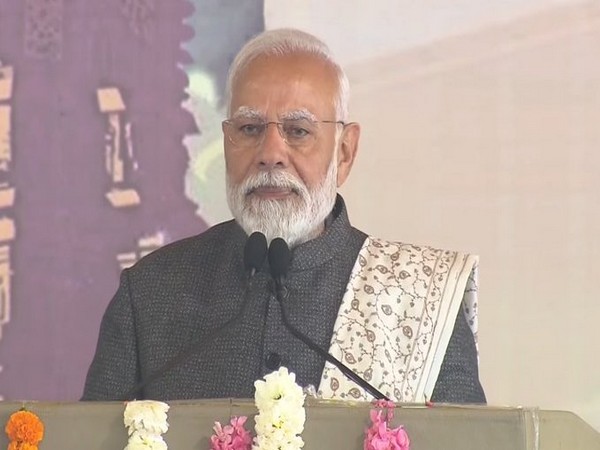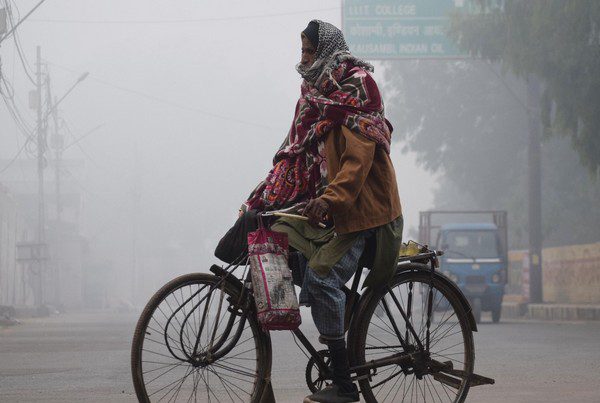Amid the euphoria and growing anticipation in India around the opening of the Ram Temple in Ayodhya, Uttar Pradesh, later this month, the Vishwa Hindu Parishad (VHP) of America organised an Epic Tesla Musical light show in Maryland state.
Videos captured by ANI showed people from the Hindu community holding flags inscribed with images of Lord Ram and raising ‘Jai Shree Ram’ and ‘Ram Lakshman Janki, Jai Shri Hanuman Ki’ slogans.
The Tesla car light show was synchronised to the tunes of Jai Shri Ram and was organised by VHP, US chapter.
More than 150 cars, parked strategically in the ‘Ram’ formation, participated in the light show. Indian Americans from Washington, Virginia and Maryland beamed bright and colourful from Tesla bars.
The cars gathered at Sri Bhakta Anjaneya Temple in Maryland, which is situated on a street named the ‘Ayodhya Way’.
Tesla’s vehicles have the unique ability to put on synchronised light shows with other Teslas, which can be a particularly entertaining feature in large groups.
The Tesla light show organised by the Hindu community had 150 vehicles. All cars owned by the indian American community participated as they flashed and pulsed to the song of Jai shri Ram The light show is part of the celebration of the Rama Mandir opening in Ayodhya.
Teslas of all colours synchronised various colours from their headlights and taillights, all together displaying a colourful array.
Several rows of cars parked in a huge parking lot saw all of them go from moments of complete darkness to varying brightness levels. Because the vehicles were synchronised, they demonstrated interesting light patterns, like a few moments where only taillights were being used split-seconds apart to create the appearance of laser-like motion from aerial views. For creating this custom light show required a technical hand, as it was created by a young devotee.
“The show featuring all the 150 cars was performed using a software loaded via a USB flash drive. Each light is programmed differently to represent the devotion and enthusiasm towards Sri Ram Bhagawan ahead of the Ayodhya Mandir inauguration,” Satvik Gudipati, a young programmer from Maryland, told ANI.
Prashant, a resident from Virginia, said, “Its really inspiring to be here and be part of this tesla light show. Since 1992, I have been hearing that Ram Mandir will be built. However, it’s only now that it is close to becoming a reality. Shri Ram is arriving to take his thrown at his birthplace. I can now proudly say that Ram Mandir is set to be opened for devotees in Ayodhya.”
Meanwhile, Mahendra Sapa, Vishwa Hindu Parishad of America Washington DC chapter President said, “As we joyously celebrate the inauguration of the Grand Mandir of Bhagwan Shri Ram, we reflect on over 20 generations of patience, perseverance, and sacrifices that led to this momentous occasion. This new Diwali holds a special significance as we honor the souls of countless karsevaks who made the ultimate sacrifice to bring us justice, including the Kothary Brothers.” “The Mandir stands as a symbol of faith and a tribute to the enduring spirit of our community. In this historic moment, we express gratitude to all contributors for realizing this cherished dream,” he added.
Meanwhile, on Saturday, Indians in the United States organised a car rally in Edison, New Jersey.
More than 350 cars participated in the rally. Visuals accessed by ANI showed people from the Hindu community holding flags inscribed with images of Lord Ram and several cars lining up on the streets.
Amid ongoing events and celebrations across the globe ahead of the ‘Pran Pratishtha’ ceremony at the Ram Temple in Ayodhya on January 22, giant billboards of Lord Ram and the majestic shrine in the temple town of Uttar Pradesh have gone up in more than 10 states, thousands of miles away in the United States.
The Vishwa Hindu Parishad (VHP), US chapter, in association with Hindus from across the US, have put up more than 40 billboards in 10 states and more, displaying the message around the the grand ‘Pran Pratishtha’ ceremony at the birthplace of Shri Ram Lalla in Ayodhya on January 22.
The billboards have gone up in Texas, Illinois, New York, New Jersey, and Georgia, among other states. Additionally, Arizona and the State of Missouri are set to join this visual celebration starting Monday, January 15, according to the VHP, American chapter.
“The resounding message conveyed by these billboards is that Hindu Americans are elated and joyously participating in this once-in-a-lifetime event. Their emotions overflow as they eagerly await the auspicious day of the consecration ceremony,” Amitabh VW Mittal, general secretary, Hindu Parishad of America, told ANI.
“The Hindu community in New Jersey is brimming with joy, eagerly anticipating the upcoming Car Rally, Exhibition, Curtain Raiser, Billboards across New York New Jersey, and the grand celebration slated for the 21st night. The enthusiasm is palpable, with members from Mandirs across NJ eagerly looking forward to this once-in-a-generation event,” Teja A Shah, joint general secretary, Vishwa Hindu Parishad, America chapter, told ANI.
To commemorate the inauguration of the Ram Temple in Ayodhya, the Hindu American community across the US has organised several car rallies and has planned many more events in the run-up to the ‘Pran Pratishtha’ in Ayodhya.
Meanwhile, President of the Mauritius Sanatan Dharm Temples Federation, Bhojraj Ghoorbin informed that all temples in Mauritius will organise Ramayan Chanting and celebrate on January 22, commemorating the Pran Pratishtha of Lord Ram in Ayodhya.
“The Hindu community in New Jersey is brimming with joy, eagerly anticipating the upcoming Car Rally, Exhibition, Curtain Raiser, Billboards across New York New Jersey, and the grand celebration slated for the 21st night. The enthusiasm is palpable, with members from Mandirs across NJ eagerly looking forward to this once-in-a-generation event,” Teja A Shah, joint general secretary, Vishwa Hindu Parishad, America chapter, told ANI.
To commemorate the inauguration of the Ram Temple in Ayodhya, the Hindu American community across the US has organised several car rallies and has planned many more events in the run-up to the ‘Pran Pratishtha’ in Ayodhya.Meanwhile, President of the Mauritius Sanatan Dharm Temples Federation, Bhojraj Ghoorbin informed that all temples in Mauritius will organise Ramayan Chanting and celebrate on January 22, commemorating the Pran Pratishtha of Lord Ram in Ayodhya.
He said, “In Mauritius, all our Hindu brothers and sisters are in a different mood nowadays. As from the Sankranti, on January 15, all our mandirs in Mauritius are doing the Ramayan chanting. And especially on the 22nd, we are having the same as we used to celebrate Diwali. In Mauritius, we are celebrating two Diwali.”
He added, “The first Diwali is on January 22, and the second Diwali is on October 31. We will do it the same as we all know: after 14 years of Vanwas (exile), Prabhu Shri Ram is coming to Ayodhya. So this time, not after 14 years, Prabhu Ram is coming after 500 years.”
President Ghoorbin also shared that a day before the inauguration of Ram Mandir in Ayodhya, a cultural programme will be held and Mauritius Prime Minister Pravind Kumar Jugnauth will attend the event as a chief guest.
Prime Minister Narendra Modi is set to attend the ceremonial installation of the idol of Shri Ram Lalla inside the sanctum sanctorum of the grand temple on January 22.
A host of leaders and dignitaries from all walks of life have been invited to the grand temple opening in Ayodhya. According to temple officials, the ceremony will be held over seven days starting January 16.
The Shri Ram Janmabhoomi Teerth Kshetra Trust has decided to enthrone Ram Lalla at the sanctum-sanctorum of the Ram Temple at noon on January 22.
Vedic rituals for the Pran-Pratishtha ceremony of Ram Lalla in Ayodhya will begin on January 16, a week before the main ceremony.
Earlier, on Wednesday, the Indian envoy to the US, Taranjit Singh Sandhu said Ramayan is a bridge across geographies and teaches people about the complexities of human relationships and the eternal struggle between good and evil.
Speaking at an event at the US Capitol Hill in Washington, DC, titled ‘Ramayana across Asia and Beyond’, the Indian envoy said, “Ramayan and its shared heritage across the Indo-Pacific. The lessons and tales from Ramayan are passed down from generations, and it is hard to say exactly when one learns them. It’s as if one was born with them. The epic gives insights into the complexities of human relationships, governance and spirituality, dharma or duty, justice, sacrifice, loyalty, and the eternal struggle between good and evil. The Ramayan has something to teach us about each of these themes, among many other things.”
“The Ramayan is also a bridge across geographies. Stories from the epic are well known in many countries across Indo Pacific, from Cambodia to Indonesia, from Thailand to Laos. The epic has been reimagined, retold, included in the artistic, literary, and religious traditions of various societies incorporating their unique cultural nuances. I have been personally witness to this influence of Ramayan across boundaries,” Ambassador Sandhu added. (ANI)
For more details visit us: https://lokmarg.com/
